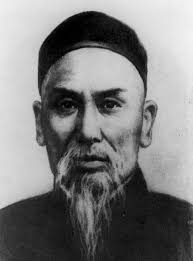
A quick note about The Imperial Yang Style Taijiquan:
Often when you read about this style, you will be told something like:
"Yang Luchan was pressured into teaching his style to the imperial family, and so he chose to teach them an inferior version of the art."
This is another example of how official histories of martial arts are generally just propaganda. It's cut from the same cloth as the silly story of "how Yang Luchan learned Chen Style through a hole in the fence." (I'll write a series of posts about history and propaganda soon.)
Yang Luchan, by all useful accounts, was thrilled to teach in the imperial household, because it meant good money. He taught them the more comprehensive earlier system with many different forms.
What most people learn now is the "Public" system, which has only one central form. (This isn't necessarily bad: The Public form is a beautiful concentration of the essence of the rest of the system, a sort of "short form" of the whole system.)






